Sylvia Plimack-Mangold / Sylvia Plimack Mangold
"I owe you the truth in painting, (...la vérité en peinture...) and I will tell it to you." This promise that Paul Cézanne made to his frequent correspondent, the painter Emile Bernard, in a letter dated October 23, 1905, prompted both Jacques Derrida and Louis Marin to pen subtly argued texts (in 1978 and 1982, re-spectively). The painter's aim to tell the truth exhibited by his works by means of language preoccupies both the philosopher and the art historian. And with keen precision, Louis Marin observes: "In that sense — for the benefit of such a distancing through and within the discourse – we went from the opaque rendering of linguistic signs to the transparent immediacy of looking with the eye: by means of truth, we went from one to the other." (L.M. 'Texturen des Bildlichen' diaphanes 2006) Yet what is the eye aimed toward – to that which is shown by the painting or to the work that presents itself? This is the area of tension inhabited by the painter Sylvia Plimack Mangold. Truth has provided a core to her oeuvre for forty years in a wholly unpretentious manner.
The motif that the artist subjects to a laborious and time-consuming process of appropriation and trans-formation has remained reproach and reference throughout. Its function is multifaceted, changeable, in-spiring. The works created between 1967 and 1975 in New York show precisely the perspectivally cap-tured spatiality, the textures, the light and the mood of her immediate working and living space. All as-pects are ascertained, as it were. A test arrangement, sometimes making use of a mirror or patches of light and later rulers and masking tape painted in trompe-l'oeil style, juxtaposes the neatly rendered truth with illusion as equals.
After 1976, Sylvia Plimack Mangold paints works that present and represent the attributes and characteris-tics as well as the make of the paintings. Make is understood here in the noblest sense of the word. It is the embodiment of the pictorial object, its sensorily tangible presence.
The move into the Hudson River Valley initially led to radical, almost abstract and self-referential picto-rial solutions. Then little by little and in deliberate and well thought out steps came the reentrance of the motif, at first the landscape, that has been present ever since day in, day out. Nighttime landscapes and evening atmospheres with deep-reaching horizons, painted with a generous brushstroke and flow, convey the joy and pleasure taken in painting and successful execution.
The painterly craft of Sylvia Plimack Mangold is always beguiling. Direct necessity guides the brush-stroke, determines the drawing and the application of paint. A long attentive dialogue, the seeing and do-ing, knowledge and experience, focuses and, contained by the framework of the painting to become a whole, finds its way to the work.
The mid-1980s saw the beginning of an intensive exploration of a compositional theme. A cluster of trees in the immediate vicinity of the studio become the favored models of Sylvia Plimack Mangold: 'The Ma-ple Tree', 'The Maple Tree with Pine', 'The Pin Oak'. Winter and summer paintings, the cycle of nature and period of life constitute the generalized horizon of meaning. The painter's unrelenting orientation to the facticity of the motif distances the pictorial object, circumventing any superficial naturalism. Resis-tance arises from the compositional framework through the character of the respective tree, its independ-ent and distinctive spatiality. The painter is an observer of the first and second order. As the closeness to the image being produced increases, the object being depicted distances itself in equal measure. The reli-ability of the outside world becomes part of the truth of the painting.
Sylvia Plimack Mangold created the paintings and watercolors shown in our exhibition between 2004 and 2007. Alexander and Bonin presented them from September 8 to October 13, 2007 in New York. We ex-tend our thanks to the artist as well as to Carolyn Alexander and Theodore Bonin for providing us with this important group of works.
Gianfranco Verna
Installation views

room 4

Installation view room 1

Installation view room 2

Installation view room 1
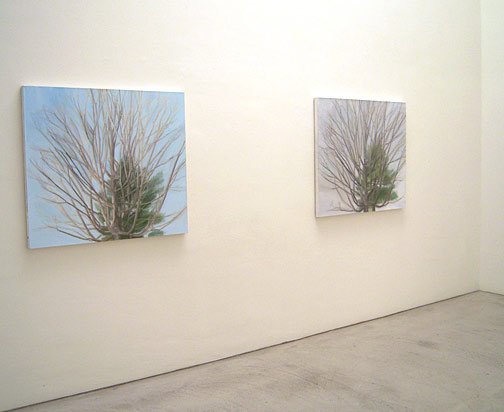
Installation view room 1
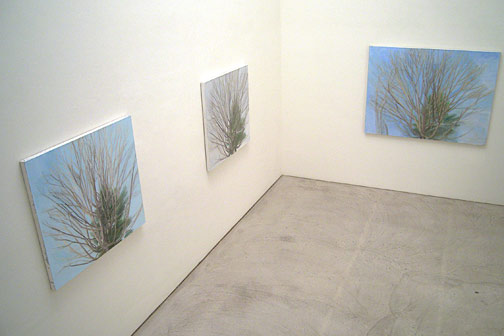
Installation view room 1
Works
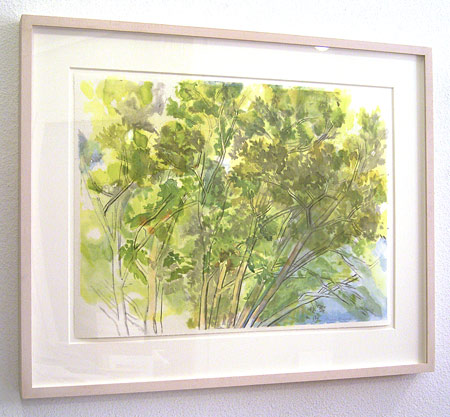
Pin Oak Crown
2006
45 x 60.3 cm / 17.75 x 23.75 "
aquatint and drypoint on paper
Edition 2/34
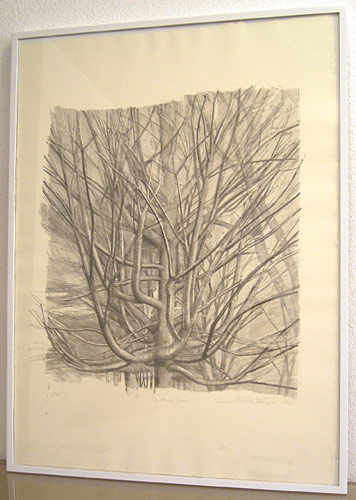
The Maple Tree
1998
lithograph
81.3 x 59 cm / 32 x 23 1/4 "
Edition 9/40
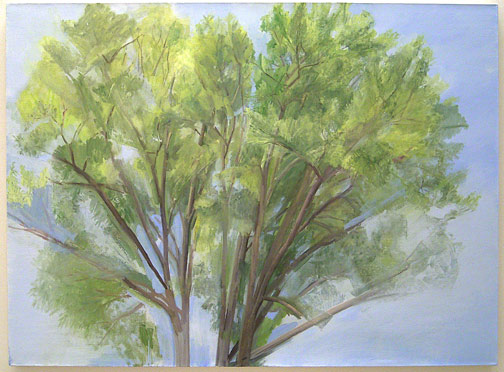
The Pin Oak (Summer) 2004
2004
114 x 155 cm / 45 x 61 "
oil on linen
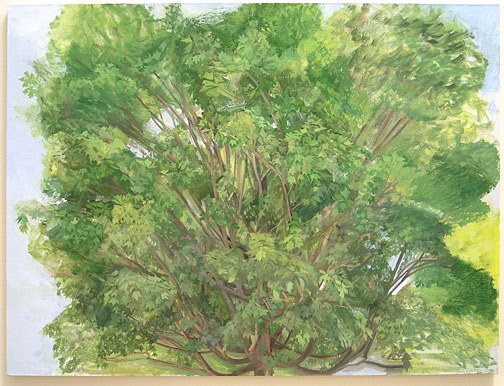
The Maple Tree, Summer 2007
2007
114.3 x 152.4 cm / 45 x 60 "
oil on linen
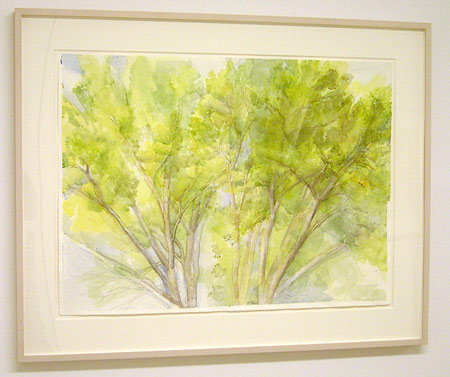
The Pin Oak September 2004
2004
56 x 76.2 cm / 22 x 30 "
watercolor and pencil on paper

The Pin Oak 6/18/05
2005
56.5 x 76 cm / 22.25 x 30 "
watercolor and pencil on paper

The Pin Oak 9/9/05
2005
55.9 x 75.6 cm / 22 x 29.75 "
watercolor and pencil on paper

The Pin Oak 10/18/03
2003
56.5 x 75.5 cm / 22.25 x 29.75 "
watercolor and pencil on paper
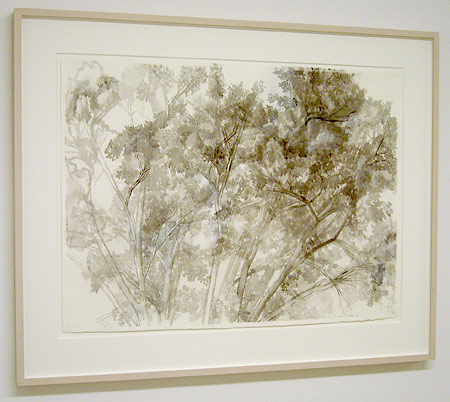
The Pin Oak 7/5/06
2006
55.5 x 75.5 cm / 21.875 x 29.75 "
watercolor and pencil on paper
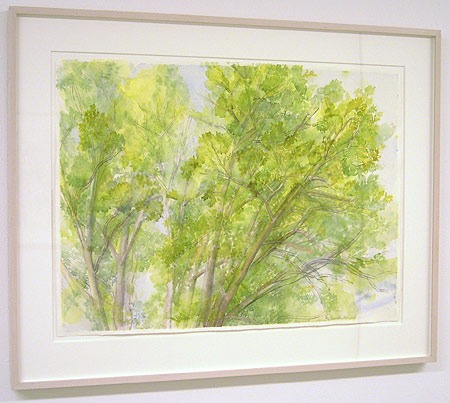
The Pin Oak May 2007
2007
55.8 x 76.2 cm / 22 x 30 "
watercolor and pencil on paper
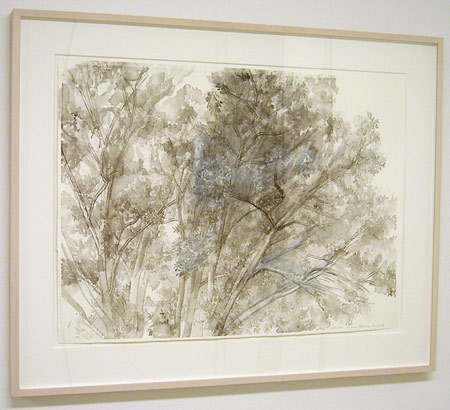
The Pin Oak 6/21/07
2007
55.8 x 76.2 cm / 22 x 30 "
watercolor and pencil on paper
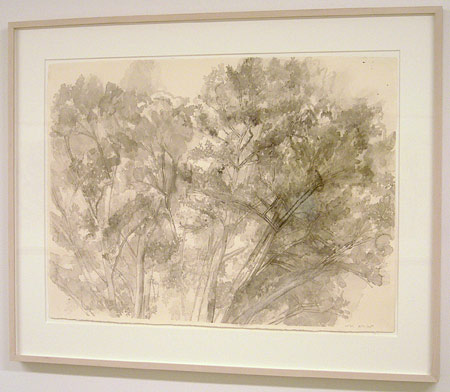
The Pin Oak 8/8/05
2005
55.9 x 75.6 cm / 22 x 29.75 "
watercolor and pencil on paper
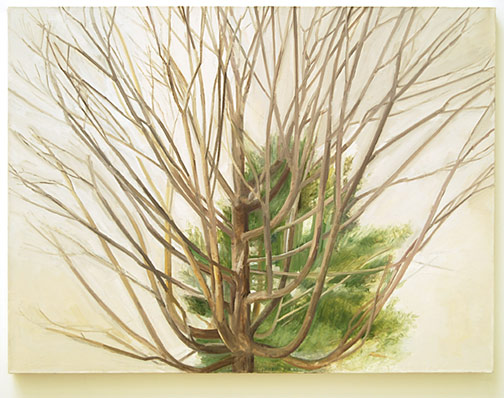
The Maple Tree with Pine
2005
76 x 101.6 x 4.5 cm / 30 x 40 "
oil on linen
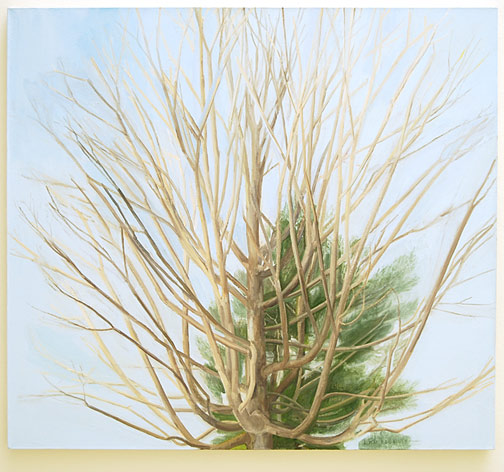
The Maple and Pine Trees
2003 - 2004
92 x 101.6 cm / 36.25 x 40 "
oil on linen

The Maple Tree with Pine
2006
91.4 x 101.6 x 4.5 cm / 36 x 40 "
oil on linen
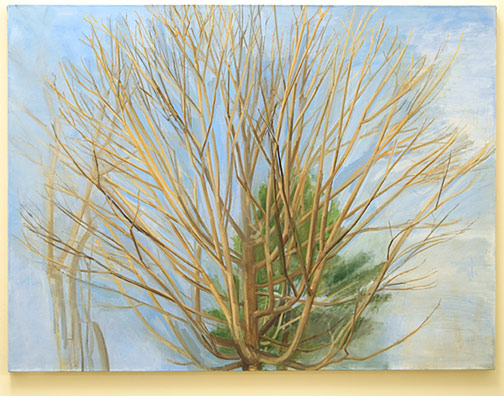
Winter Maple and Pine
2007
114.3 x 152.4 cm / 45 x 60 "
oil on linen
New
Exhibition
Dan Flavin (1933–1996) and Will Insley (1929–2011)
March 6 to April 26, 2024
New publications
James Bishop
James Bishop
Publisher: ER Publishing, Edited by Molly Warnock
Joseph Egan
Joseph Egan and Anton Himstedt: Common Ground
Publisher: Josef Albers Museum Quadrat Bottrop, Ulrike Growe
Exhibitions / Insight
INSIGHT #3 spotlights the graphic work of Fred Sandback through three examples from 1974 and 1982.
Joseph Egan, Ptolemäus: Die Welt im Griff? Antike Kartographie und zeitgenössische Kunst, Kunsthaus Grenchen
3. März bis 26. Mai 2024
Dan Flavin, Widmungen aus Licht, Kunstmuseum Basel
2. März bis 18. August 2024
Rita McBride, Momentum,
Dia Beacon, Beacon, NY,
July 1, 2023 to January 2025
Fred Sandback, Kurt Büsser ermöglicht... Erich Buchholz und Fred Sandback, Museum Wiesbaden
19. Januar bis 14. April 2024
Sol LeWitt (1928–2007)
A Wall Drawing Retrospective
Yale University Art Gallery and Williams College Museum of Art
November 16, 2008 – 2033

